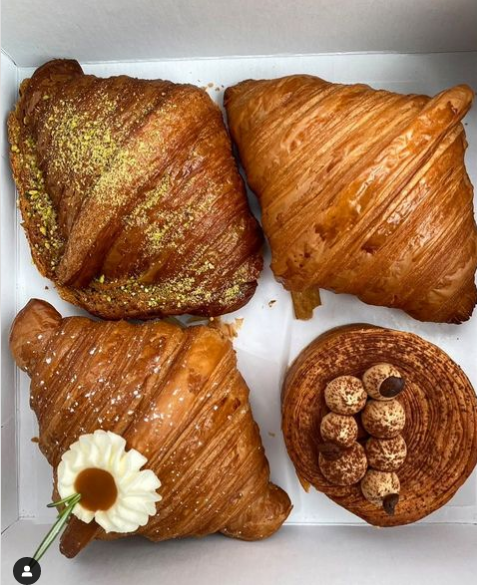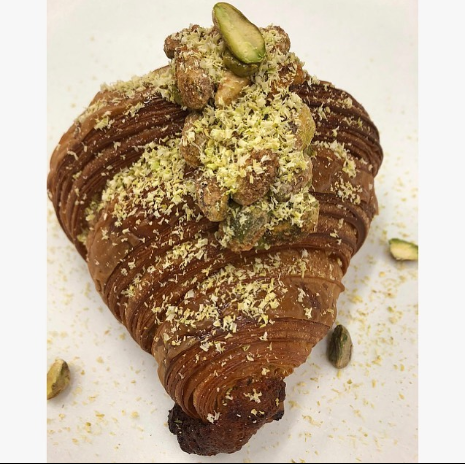The Perfect Croissant: What Goes into Making the Perfect Flaky Pastry?
Google the word “croissants” and be prepared to visit more than 200 million sites filled with tasty recipes, information on nutritional value, and proper ways to eat flaky pastry.
Whether you enjoy a croissant on a Sunday morning for breakfast or grab one for an afternoon snack, the layers of butter and dough provide a delectable texture that cannot be matched by any other baked good.
The Origin of Croissants: Tracing the History of This Beloved French Pastry
Though the world considers it a French specialty, there are various accounts of the true origins of the croissant. This crescent-shaped pastry has many legends attached to it, but the earliest records actually trace it back to 13th century Austria.
The word “croissant” comes from the German word “kipferl,” which means crescent. The kipferl was introduced to France in 1839 with the Paris opening of a Viennese bakery.
It wasn’t until 1915 that the French croissant recipe using laminated yeast dough was recorded.
Key Ingredients in a Croissant
If you want to achieve the perfect flaky pastry that croissants are known for, you need the following ingredients:
High quality flour
Unsalted butter
Active dry yeast
Fine sea salt
Granulated sugar
The Art of Croissant Making: A Step-by-Step Guide
The simple but pleasurable taste of a croissant comes from a complex process that takes time and patience and uses only the freshest ingredients. Finding the perfect balance of the temperature of both the butter and the dough is crucial in creating the airy steam pockets that form the layers of the pastry.
Creating the Dough
Combine the dry ingredients of salt, sugar, and flour before proofing the yeast in a mixer. Combine warm water with the sugar and yeast and allow to sit for 10 minutes until foamy. Add milk and melted butter to the yeast mixture and incorporate the dry ingredients with a mixer. Shape dough into a flat ball and wrap it with plastic wrap to chill for two hours.
Incorporating the Butter: Laminating the Dough
Place the butter between two parchment sheets to sit at room temperature for 10 minutes. Pound the butter with the rolling pin to flatten and shape it (you can also use a bench scraper if on hand) into a 7-1/2inch square. Refrigerate the flattened butter between the parchment for another 15 minutes. Place the dough onto a floured surface and roll into a 12-inch square. Remove one sheet from the butter block and flip the block onto the middle of the square.
Folding and Rolling
Remove the parchment paper and roll each corner edge of the butter block away from the centre to form eight inches in length. Brush off any excessive flour and fold one corner up and over the butter block, gently stretching it. Continue to form four layers of dough over the butter block.
Flour the surface. Begin using the rolling pin to form trenches to disperse the butter at an even rate. Roll the dough into a 24 x 12 rectangle before beginning to fold the dough into thirds. Cover the dough with plastic wrap and chill for 45 minutes. Repeat this rolling, folding, and chilling process two more times.
Proofing: Allowing the Dough to Rise
As one of the most important steps in baking pastries, proofing is necessary for proper fermentation of the dough to release gases. This leavening process is usually done in warm, humidified areas known commonly as proof boxes. The same effect can be reached by using a cooler or bin containing the dough near a pan of hot water. The dough is covered and refrigerated for up to 24 hours.
Shaping and Cutting
Using a lightly floured surface, roll the refrigerated dough into an 8-x-20-inch rectangle before slicing the entire piece vertically to form two four-inch-wide pieces. Cut three horizontal slices to create eight 4-x-5-inch rectangles. Make two triangles per piece by cutting diagonally. Work with each piece until it is eight inches in length before placing a small slit at the widest base of the triangle.
Roll each piece into a crescent shape with tip of triangle placed underneath. Mold the two ends inwards before placing them on a baking sheet. Place plastic wrap loosely on top of the croissant and leave at room temperature for one hour before placing in the refrigerator for up to 12 hours
Baking to Golden Perfection
Before placing the croissants into a preheated 400°F (204°C) oven, brush them with an egg wash for the perfect golden colouring. After 10 minutes, rotate the pan and continue baking for another 10 minutes until golden brown.
Cut & Baked Almond Croissant
Strawberry Croissant
Exploring the World of Croissant Variations: From Decadent Chocolate Filling to Savory Delights
For those seeking fresh croissants in Vaughan, Bartholomew Bakery offers handcrafted pastries made daily. Using only the freshest ingredients from local suppliers when possible, we offer an array of sweet and savoury croissants. Try our Butter Croissant, Pain Au Chocolat, Twice Baked Almond, Twice Baked Pistachio, Cinnamon Croissant, Seasonal Fruit, Seasonal Filled Croissant, or our scrumptious Mortadella Croissant-Wich.
Experience the Taste of Authentic French Croissants at Bartholomew Bakery
Visit Bartholomew Bakery’s artisanal bakery in Vaughan to taste authentic, delectable croissants. Choose from our freshly made originals or chocolate, almond, pistachio, fruit, cinnamon, or sausage-filled croissants.







